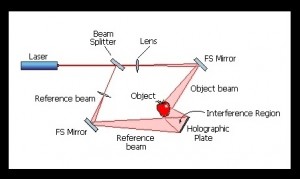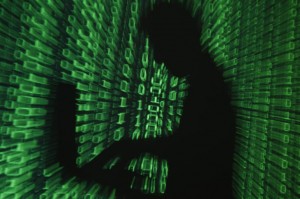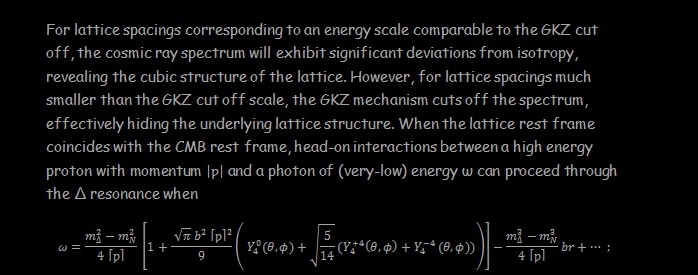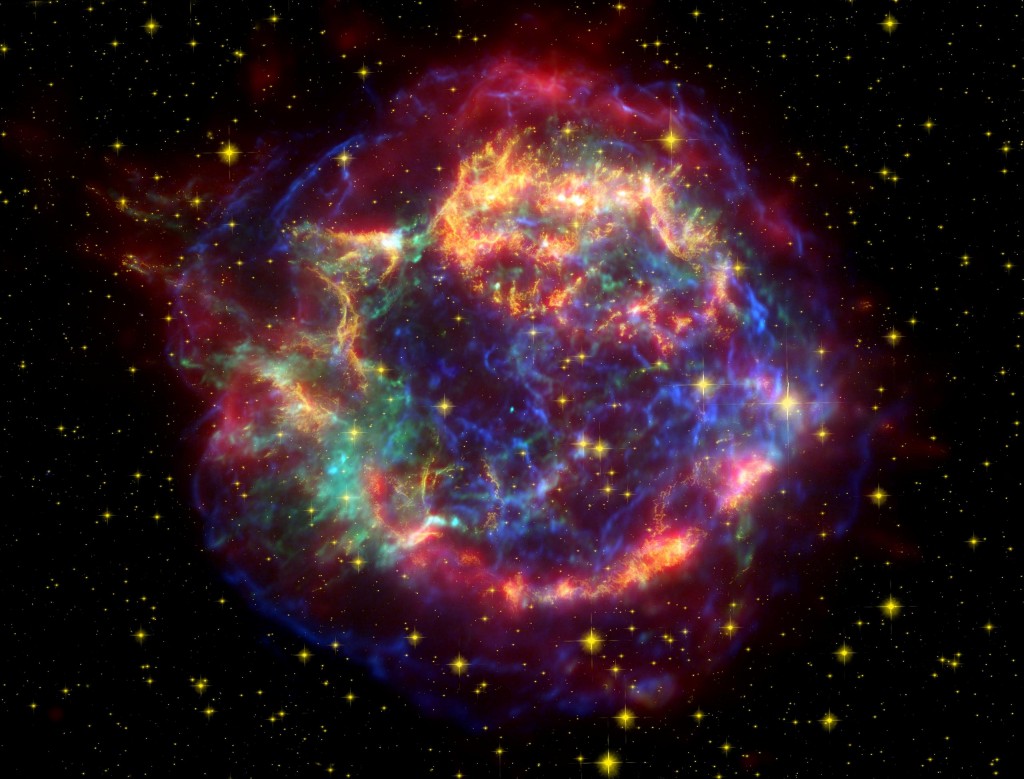“If the universe isn’t the way Bohm describes it, it ought to be.”—John P. Briggs and F. David Peat, Looking Glass Universe
It all started with some pesky rats that refused to get lost in a maze and some particles that wouldn’t behave in a sane, rational manner. More on the latter later. But first, a neuropsychologist named Karl Lashley had trained some rats to perform various different tasks, such as running a maze. He then began removing different parts of the rats’ brains to see which part contained the memory of how to perform the task. When a rat could no longer perform a task, Lashley would know that he had removed the part of the brain where that memory was stored. Logical enough. The problem was that it didn’t work. Until he removed so much of their brains that they finally died, he could not completely eradicate their training. This was most puzzling to Lashley and to his young protégé Karl Pribram. It seemed to Pribram that memories must somehow be distributed throughout the brain, but there was no model of brain functioning at the time in which that made any sense at all. In fact, it ran contrary to what decades of neuroscience had established: that different parts of the brain serve different and discrete functions.
Then Pribram read an article in Scientific American about the creation of the first hologram and it all started to make sense. Holograms are created by splitting a laser beam in two. One of the beams is then bounced off of the object to be copied, and the second one is bounced around by mirrors so that it collides with the reflected light from the first, which then creates an interference pattern that is recorded on a piece of film, usually referred to as a holographic plate. An interference pattern is what you get if you drop two rocks into a pond. One rock just makes several concentric circles of waves. However, the waves from two rocks dropped  simultaneously will create an interference pattern as the circular waves from the two rocks collide. This interference pattern is what is recorded on the film, and when a laser is fired through it, you get a three-dimensional image of the object that appears to be solid. What got Pribram all excited is that one of the properties of a holographic plate is that if you cut it into pieces, each piece will still show the complete object recorded on it. So if you cut a holographic plate containing the image of an apple into a hundred pieces and fire a laser through one of the pieces, you will still get an image of an apple. It will probably just be a circular red blur at that point because the image does degenerate as the film fragments get smaller. Nevertheless, the information from the whole piece of film is still contained in the interference pattern recorded on each fragment. Pribram realized that if memories were stored like holograms, as interference patterns in brain cell activity, it would explain where they were located in the brain: everywhere.
simultaneously will create an interference pattern as the circular waves from the two rocks collide. This interference pattern is what is recorded on the film, and when a laser is fired through it, you get a three-dimensional image of the object that appears to be solid. What got Pribram all excited is that one of the properties of a holographic plate is that if you cut it into pieces, each piece will still show the complete object recorded on it. So if you cut a holographic plate containing the image of an apple into a hundred pieces and fire a laser through one of the pieces, you will still get an image of an apple. It will probably just be a circular red blur at that point because the image does degenerate as the film fragments get smaller. Nevertheless, the information from the whole piece of film is still contained in the interference pattern recorded on each fragment. Pribram realized that if memories were stored like holograms, as interference patterns in brain cell activity, it would explain where they were located in the brain: everywhere.
Lots of research into this idea has been done since then, including one guy who took out a bunch of poor salamanders’ brains and put them back in sideways, backwards and upside down to see if it had any effect on them. It didn’t. So this and a number of other studies have backed up Pribram’s theory and even expanded the holographic idea to brain functions beyond memory. Other studies have refuted the concept. Such is the way of scientific inquiry. The holographic model of brain functioning has its supporters and its detractors and they all think that they’re right.
Physicist David Bohm was having problems of his own trying to get his colleagues to take his ideas seriously. Bohm was bothered by all of the uncertainty and unpredictability in quantum theory and decided that there must be a better way to explain subatomic reality. In his early years as a physicist, he had done a lot of work with plasmas and was amazed at how electrons in plasma seemed to behave in a unified, organized way. To Bohm, it almost seemed like the plasmas were alive. He found the same type of organized “behaviors” in electrons in metals and gave the collective movements of electrons the name plasmons. This was all a bit of a problem since electrons aren’t supposed to be alive and shouldn’t be acting like they are. This got the gears turning in his brain.
Another problem in quantum physics is that at the subatomic level there doesn’t seem to be any cause and effect relationship between one quantum action and another. This is a real dilemma since science is supposed to be able to make accurate predictions based on cause and effect relationships. In quantum mechanics, they can only tell you what might happen next. If that doesn’t sound like a problem to you, would you get on a plane if a scientist told you that it might not crash? Keep in mind that airplanes and everything else in the universe, including you, are made up of these unpredictable little subatomic boogers.
All of this unpredictability and electrons behaving collectively got Bohm thinking, and he decided that there must be a deeper level of reality – a subquantum level at which all of this chaos and disorder disappears. He realized that scientists have always looked at the universe as pieces, like the various parts of a car that together make up the whole machine. Bohm began to believe that the universe was actually one enormous whole. A rough analogy is that we don’t think of ourselves as being a collection of millions of cells, each with its own distinct identity; we think of ourselves as one whole person. Bohm started to think that maybe physicists were like biologists trying to figure out how the human body works by examining individual cells instead of looking at the systems that they comprise. This idea of there being some deeper, undiscovered level of reality became known as the hidden variable theory. Most physicists didn’t buy it then and they still don’t today.
One problem with the hidden variable theory, besides the fact that it was hidden, was that it implied a thing called nonlocality. Nonlocality means that, at the subquantum level proposed by Bohm, location becomes meaningless, as do space and time as we perceive them, and we all know that’s ridiculous. We know that space and time exist…don’t we?
Then, in 1964, a physicist named John Bell came up with a mathematical proof that seemed to confirm nonlocality. What Bell proved, at least on paper, was that subatomic particles that were once in contact continue to act as if they’re still in contact no matter how far apart they are, and here’s the kicker: they do so instantaneously. This is like saying that every time a stoplight in Venezuela turns red, a stoplight in Siberia turns green (and vice versa), and the only connection between the two is that they were made at the same stoplight factory. Also, since all particles are continuously interacting and separating, this nonlocal, faster-than-light communication aspect of quantum systems is pervasive throughout the entire universe. Some people were starting to think that maybe Bohm might be onto something, but still not very many.
 So nonlocality was all very well and good on paper, but can you really prove it? Not in 1964 because the technology required to conduct such an experiment didn’t exist. There were some experiments done in the 1970s that offered some degree of proof, but nothing conclusive. Then, in 1982, physicist Alain Aspect and his team were able to conduct an experiment that measured the polarization of two photons that were once in contact after they had separated and found that they did continue to behave in a complimentary manner, either by “communicating” somehow at a speed even faster than the speed of light, in violation of the theory of relativity, or by nonlocality, in violation of our sensory and sensical perceptions of space and time. Most physicists subscribe to the nonlocality explanation, but they still stubbornly persist in doubting most of Bohm’s other theories.
So nonlocality was all very well and good on paper, but can you really prove it? Not in 1964 because the technology required to conduct such an experiment didn’t exist. There were some experiments done in the 1970s that offered some degree of proof, but nothing conclusive. Then, in 1982, physicist Alain Aspect and his team were able to conduct an experiment that measured the polarization of two photons that were once in contact after they had separated and found that they did continue to behave in a complimentary manner, either by “communicating” somehow at a speed even faster than the speed of light, in violation of the theory of relativity, or by nonlocality, in violation of our sensory and sensical perceptions of space and time. Most physicists subscribe to the nonlocality explanation, but they still stubbornly persist in doubting most of Bohm’s other theories.
Meanwhile, let’s head back to England in the 1960s, which is easy to do since we now know that space and time are illusions. Bohm, like Pribram, was looking into holography and realizing that it had a lot in common with his theory of the universe. Like the quantum world with all of its apparent disorder, a piece of holographic film with all of its swirling interference patterns appears chaotic. The order remains hidden until you fire a laser through it. Then you can see the coherent information contained within. It then occurred to him that if the universe was itself a kind of giant hologram that this would explain how the subquantum level was nonlocal. Just as fragments of a holographic plate contain all of the information from the whole, which is itself a kind of nonlocality, then this sort of nonlocality should be expected in a holographic universe. And if the universe is a hologram, that would also mean that all of the information about the entire cosmos should be in every individual piece, right down to the subatomic level.
About ten years later, this same sort of idea was occurring to Karl Pribram and was making him wonder just what sort of reality we’re walking around in. If the brain functions holographically, is reality just a bunch of waves and interference patterns that our brains turn into shapes and sounds and other sensory perceptions in a way that we’re equipped to handle? We all pretty much agree, for the most part, what reality is, but that may only be an interpretation – a kind of mass hallucination. We think that what we see and hear and touch is really out there, but Pribram points out that we have no way of perceiving reality outside of our various senses, all of which are processed by our brains. What we think we see with our eyes is really what is processed by our eye-brain system, and the same is true for all of our senses. If you’re not convinced of this, consider the hallucinations experienced by some of the mentally ill. Unless they can see and hear things that the rest of us can’t (and maybe some can, but that’s a topic for another day), then all of this is taking place in their brains. And smelling things that aren’t there is a fairly common side effect of some drugs. How could you smell something that isn’t there unless your nose-brain system is somehow screwing with you?
Of course, physicists have been telling us for a century that everything is made of atoms, and that atoms are mostly empty space and/or waves of energy. What we experience as reality in our heads might not be what’s really going on out there. Since the time Pribram first began expressing his theories, multiple studies conducted by people in multiple fields have indicated, but not conclusively proven, that the brain functions at a quantum level, which could mean that it takes all of this outer chaos and converts it into what we perceive as an orderly reality. Maybe a holographic plate knows more about what reality actually looks like than we do.
Over the years, Bohm continued to refine his theories and came up with the concepts of implicate and explicate order. The explicate is what we can see and measure and make sense of (most of the time). The implicate is hidden from us (most of the time) but is much larger and is the source of all of what we perceive as reality. In the parlance of clichés, the explicate is just the tip of the iceberg that we see jutting up out of the ocean. The far greater mass of ice lies below the surface, unseen and (most of the time) undetected. What’s more, the implicate could contain many “layers” of reality. Our universe could be but one of who-knows-how-many others. Heavy stuff, huh?
But wait! There’s still one major element of Bohm’s theory that we haven’t addressed: What is this hidden variable that he proposed must exist?
Just knowing that the hidden variable theory implies nonlocality, and since nonlocality exists, there must be one isn’t good enough. You at least have to come up with some sort of hypothesis, and what he and others have suggested might be the answer is pretty shocking stuff. The hidden variable is, according to Bohm, (pause for dramatic effect) consciousness. You think I’m kidding? Try these two quotes on for size: “It follows, then, that the explicate and manifest order of consciousness is not ultimately distinct from that of matter in general,”¹ and “The ability of form to be active is the most characteristic feature of mind, and we have something that is mindlike already with the electron.”²
Bohm believed that consciousness is a more subtle form of matter that permeates the entire universe. It is everywhere and everywhen simultaneously and is an integral part of all things. That means, literally, that all things are conscious on some level: people, animals, trees, rocks, everything. Remember his plasma experiments where groups of electrons seemed to behave as a living system? And it’s not only in our explicate universe. It’s also in the great, hidden implicate order from which our reality is continually being formed.
As crazy as this may sound, Bohm maintained that this would explain why physics can’t separate the observer from
the observed results in their experiments in some cases. There is even one very popular theory of physics (the Copenhagen Interpretation) that posits that subatomic particles don’t even exist until they are observed. Bohm never bought that. He believed that the interconnectedness of observer and observed was due to the fact that both were part of the same conscious, holographic system. Physicists Evan Harris Walker and Nick Herbert summed it up like this:
- There is a subquantal level beneath the observational/theoretical structure of ordinary quantum mechanics.
- Events occurring at this subquantal level are the elements of sentient being. This being the case, we find that our consciousness controls physical events through the laws of quantum mechanics.³
Herbert later put it even more succinctly: “Consciousness, nonlocal in space and time, is the hidden variable.”⁴
One analogy that has been used is that the universe and everything in it right down to the quantum level, including you and your brain, is like the hardware of a computer, localized in space and time. Consciousness is like the software, nonlocal throughout every point in space and time simultaneously. As this applies to humans, I prefer the metaphor of radios for explaining it. Radio waves are all around us all the time, but we aren’t aware of them. They are beyond our level of perception. The fastest, easiest way to prove that they are there is to turn on a radio and listen to the sound that comes out. I tend to think of consciousness the same way. It is all around us but each of us is our own unique sort of receiver broadcasting our own kind of music. The source of our awareness is all the same, but how it gets interpreted and manifested by each of us to create distinct individuals is probably done at some quantum level in our brains. I base this last assertion on the way degenerative brain diseases and head trauma can sometimes drastically alter one’s personality.
A universe which is one big whole rather than the sum of its gazillions of parts, but in which each of the gazillion parts, including each one of us, contains the pattern for the whole could easily explain such things as synchronicities, precognition, telepathy, out-of-body experiences, remote viewing, etc. All of these things and more are covered in Michael Talbot’s book The Holographic Universe, a synopsis of which would take far too long to do properly in this article.*
In such a universe, people who seem to be capable of performing miraculous feats, like Sai Baba and Stylianos Atteshlis, may have brains that are better able to perceive the holographic nature of reality and manipulate it on levels that most of us can’t. If the universe really is all in our heads, or at least our perception of it is, then it is certainly possible that some people are more aware of this and are therefore less confined by it than the rest of us. How do they do it? I’m guessing the same way platypuses (platypi?) can hunt for fish in zero-visibility water by detecting their electromagnetic fields: they just can.
So to summarize: There is evidence to suggest that our brains function like a hologram. Nonlocality suggests that our universe might be a kind of hologram. Bohm’s theory of implicate and explicate order says that our universe is just a tiny part of an inconceivable whole, and consciousness might be the hidden variable that controls subatomic events. Next time, since all of this isn’t nearly bizarre enough as it is, we’ll see how any or all of it might account for any or all things weird on our wacky little planet. Should be a hoot and a half, if not two hoots.
_______________________________________________________________________________________
1. Michael Talbot. The Holographic Universe. New York: Harper Collins, 1990, p. 50.
2. David Bohm. Wholeness and the Implicate Order. London: Routledge & Kegan Paul, 1980, p. 208.
3. Robert Anton Wilson. “Beyond Theology: The Science of Godmanship,” The Illuminati Papers. Berkeley, CA: Ronin, 1980, p. 98.
4. Ibid. p. 99.
John P. Briggs and F. David Peat’s interview of David Bohm in a 1976 issue of Omni was also insightful, helpful and enlightening, although I never actually quoted it.
*Incidentally, it turns out that I used to know the daughter of one of the researchers in one of the studies Talbot mentions in The Holographic Universe. In fact, given the time frame, it’s entirely possible that he was engaged in this study during the time that his daughter and I were friends. I never actually met the man, but I have been to his house. I only mention this because it’s interesting to me that I should stumble across a connection that I have with someone doing work in this field of study while researching the holistic, synchronistic, holographic nature of the universe. Talbot mentions several far more interesting synchronicities that happened to him while he was researching his book.


 I make no apologies for not being able to better describe what types of technology could make simulations on this scale possible because there is most likely no one “alive” in this simulation (if it is one) who can. Also, the term “posthuman” gets used a lot by most of the authors who write about this subject without ever really defining what that means and for the same reason as above: no one really knows what a posthuman civilization will look like or if it ever has or will happen. A posthuman society might be in possession of unimaginable computers, or they could be fused with their technology so that they are as much machines as organic matter…or something else that we can’t even presently conceive of. Although I’ve never seen it explicitly stated, some of the writers on this subject do tend to hint that they are including possible non-terrestrial civilizations as our simulation creators. Personally, I wouldn’t dream of leaving extraterrestrials out of the mix. They make it so much more fun to think about.
I make no apologies for not being able to better describe what types of technology could make simulations on this scale possible because there is most likely no one “alive” in this simulation (if it is one) who can. Also, the term “posthuman” gets used a lot by most of the authors who write about this subject without ever really defining what that means and for the same reason as above: no one really knows what a posthuman civilization will look like or if it ever has or will happen. A posthuman society might be in possession of unimaginable computers, or they could be fused with their technology so that they are as much machines as organic matter…or something else that we can’t even presently conceive of. Although I’ve never seen it explicitly stated, some of the writers on this subject do tend to hint that they are including possible non-terrestrial civilizations as our simulation creators. Personally, I wouldn’t dream of leaving extraterrestrials out of the mix. They make it so much more fun to think about.


 A simulation could also account for some of the oddities of quantum physics that have led to exotic ideas like the multiple universes theory, in which everything that can happen does, in separate but equally real universes. Maybe all of the new universes being constantly created in this theory are just new facets of the simulation being created in order to explore all possible outcomes. Perhaps the physics of the “real world” of our programmers is pretty straightforward and simple. They might have decided to make the rules of this reality more bizarre, complicated and unpredictable just to see how we would deal with it. That really wouldn’t make this place much different from the realities that we create for lab rats which have very little in common with their natural habitat. Very few rats live in mazes or are routinely injected with mind altering chemicals in their natural state. We do this to them because we learn from their reactions to the simulated realities that we create for them. Should we suppose that we are different, especially if we’re just pieces of code in a program? Maybe they don’t care for our feelings any more than most of us care for the wellbeing of rats. There could even be a fringe group of goofy extremists fighting for our rights called PETODE: People for the Ethical Treatment of Digital Entities. If so, I’d say that they’re losing.
A simulation could also account for some of the oddities of quantum physics that have led to exotic ideas like the multiple universes theory, in which everything that can happen does, in separate but equally real universes. Maybe all of the new universes being constantly created in this theory are just new facets of the simulation being created in order to explore all possible outcomes. Perhaps the physics of the “real world” of our programmers is pretty straightforward and simple. They might have decided to make the rules of this reality more bizarre, complicated and unpredictable just to see how we would deal with it. That really wouldn’t make this place much different from the realities that we create for lab rats which have very little in common with their natural habitat. Very few rats live in mazes or are routinely injected with mind altering chemicals in their natural state. We do this to them because we learn from their reactions to the simulated realities that we create for them. Should we suppose that we are different, especially if we’re just pieces of code in a program? Maybe they don’t care for our feelings any more than most of us care for the wellbeing of rats. There could even be a fringe group of goofy extremists fighting for our rights called PETODE: People for the Ethical Treatment of Digital Entities. If so, I’d say that they’re losing.